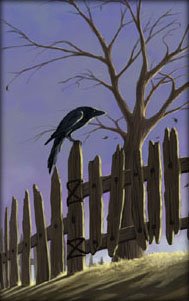The structure of a biological communities is very much a function of spatial and temporal interactions. For example, analysis of a non-tropical, climax community would show that it is comprised of very few species (low species diversity). In contrast, an equatorial tropical rainforest with moderate climatic conditions, high photoperiodism and few limits to colonization, show a relatively higher degree of species diversity. Climax communities, then, have a major fraction of the flow of energy/biomass involving very few species where in rainforests, that energy/biomass is not isolated but dispersed.
A learning network with a structure similar to a climax community would have a great deal of its information emanating from individuals of a very similar background thus creating the "echo chamber" effect. Whereby our associations with similar minded individuals creates a conversation whose point of view may be echoed by those around us limiting the opportunity of new/different ideas. The measure of species richness in a biological community (and information richness in our network) may be assessed by creating a diversity index.
The relationship between of the number of species in the community to the number of individuals in the community is shown by a ratio known as a diversity index:
 Where D= Diversity Index
Where D= Diversity IndexA = Number of species
B = Number of Individuals
The problem here is when the number of individuals is much larger than the number of species the diversity index will be very small. This could be corrected somewhat with the following:
 Still, very little information about community structure is derived because as long as you have say, 5 species and 100 individuals, your Diverstiy Index will be .50 no matter how the individuals are distributed across the 5 species.
Still, very little information about community structure is derived because as long as you have say, 5 species and 100 individuals, your Diverstiy Index will be .50 no matter how the individuals are distributed across the 5 species.There have been many attempts at refining this index but the one I remember from an undergraduate Ecology class was called the Shannon-Weaver Index (revisionists now call it the Shannon Index).
 Where: d = Index of Diversity
Where: d = Index of Diversitys = Total number of species collected
ni= Number of individuals in th ith species
n = total number of individuals
simplifying:
 simplifying still:
simplifying still: The Shannon function combines both the number of species and the the uniformity with which the individuals are distributed among the species present. The presence of both an increasing number of species or more equitable distribution of individuals among those species will result in an increase in species diversity.
The Shannon function combines both the number of species and the the uniformity with which the individuals are distributed among the species present. The presence of both an increasing number of species or more equitable distribution of individuals among those species will result in an increase in species diversity.For example, consider three networks each consisting of 100 nodes (individuals). Those 100 individuals are representative of 5 different organizational groups (species). Here is the interspecies distribution for the networks:
 You can see here that all networks have a total of 5 groups and 100 individuals. Network A (top) exhibits the most equitable distribution of the individuals while community C (bottom) shows the least equitable. While all networks will have the same species diversity index of 0.50 (see earlier calculation), network A has the higher Shannon index.
You can see here that all networks have a total of 5 groups and 100 individuals. Network A (top) exhibits the most equitable distribution of the individuals while community C (bottom) shows the least equitable. While all networks will have the same species diversity index of 0.50 (see earlier calculation), network A has the higher Shannon index.This may allow an individual to analyze his or her network as it develops over time.
If, like myself, the math makes you wail and gnash your teeth, try the following. Evaluate your network, divide it into groups, give each group a number and determine how many people you have representing each group. Then follow this link to a Shannon Index calculator, enter your the number of people you have in each group, compute and read the value for H1.
I'm not sure of the value of this index on small networks. In ecological studies a random sample of the community is done with a sample size of 100. Also, while this does evaluate diversity and equitable distribution, it doesn't evaluate something like "trust" as mentioned here in a presentation by George Siemens in Dr Alec Couros' EC&I 831 course.
I am indebted to my notes from my ecology class at the University of West Florida under Dr. Gerald Moshiri. I am also indebted to Roger's Online Equation Editor for generating the equation images in png format.







